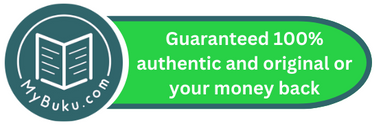Reading and Writing Japanese Hiragana - Emiko Konomi - 9784805315217 - Tuttle Publishing
- Regular price
- RM45.05
- Regular price
-
RM53.00 - Sale price
- RM45.05
- Unit price
- per
Product Description
This book provides a complete course for beginning students who want to master the first step in learning to read and write Japanese!
With plentiful writing and reading practice, this workbook starts with the basic letters and works up to writing words and complete sentences. Divided into two parts, the first part presents the 46 main Hiragana in their full and contracted forms, with extensive writing spaces provided for writing practice. Recognition and pronunciation of the letters are reinforced through writing and listening exercises.
In the second half of the book, students can apply their knowledge of Hiragana in a Writing Practice section that contains sentences related to contexts in which Hiragana words are often used, such as greetings, common expressions, place names and transportation. The exercises are graded in difficulty from Writing Drills (from copying to writing from memory) to Dictation Practice (connecting the sounds with the letters) to Writing Exercises (writing answers that fit the situations given).
Unique features of this language workbook include:
A thorough overview of the Japanese writing system explaining when and how Hiragana is used
Handwriting and stroke-order tips
Online audio files speed up the process by reinforcing the pronunciation of the letters through a variety of listening and writing exercises
Printable flashcards available online for download
Mnemonic illustrations for every character
The Japanese writing system combines three types of letters: hiragana, katakana, and kanji. Hiragana can be used to spell out the sounds of kanji Chinese character words--and if you don't know the kanji character you can use Hiragana instead (as young children do). It is also used for various grammatical-function words as well as verb and adjective endings.


